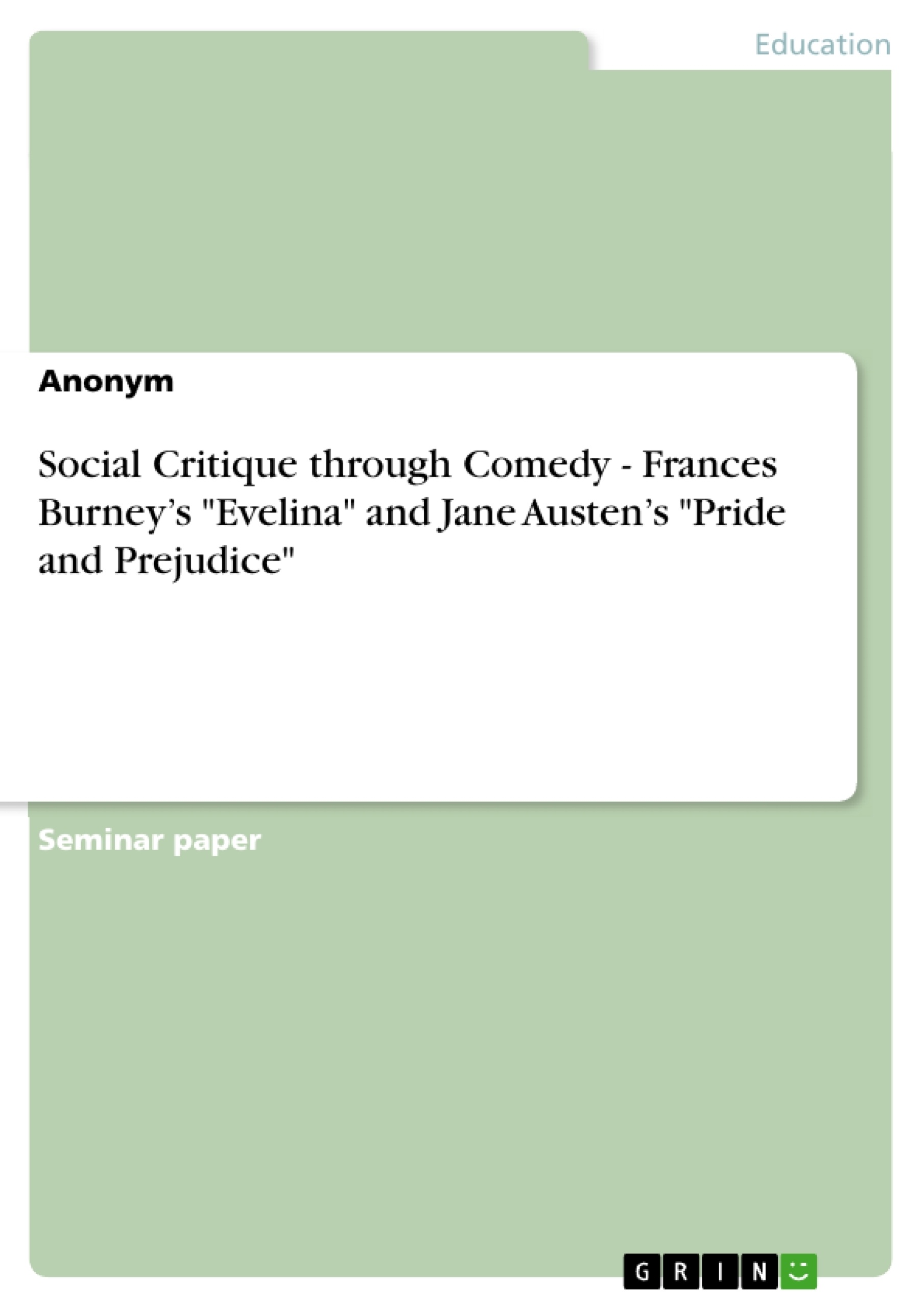This essay is intended to compare both novels regarding their attempt to criticize patriarchy and conducts of the time by sometimes more and sometimes less obvious means of comedy. It shall be discussed, how both writers gain the attention of the audience towards social critique through their narrative techniques as well as through means of characterization. It is to find that although the narrative styles, as well as the stories, seem different, there are certain features which appear similar or create a similar effect and are used in order to call attention to the civilian inequality between men and women.
Index
1. Introduction
2. Narrative Techniques
3. Stereotypes as means of social critique
4. Tricksters as means of social critique
5. Mouthpieces for the heroine
6. Conclusion



